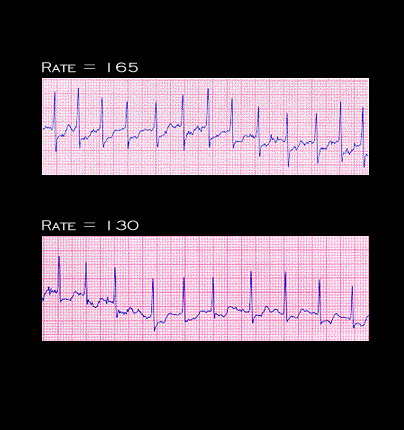
These tracings are from a 62 year old patient with mitral valve disease. They illustrate the effect of verapamil on the ventricular response to atrial fibrillation at peak exercise. The upper tracing was recorded after 3 minutes of exercise when the patient was receiving 0.25 mg digoxin daily. The lower tracing was recorded after 3 minutes of exercise when the patient was receiving 0.125 mg digoxin plus verapamil (240mg daily). This slowing of the ventricular rate frequently allows patients to exercise for longer periods with fewer symptoms.
